Lowther’s Lambs: remembering four men from Newick killed in World War One
11 November 2021
Simon Stevens, senior archaeologist at ASE, has been researching the stories of soldiers from Sussex who died during the Great War.
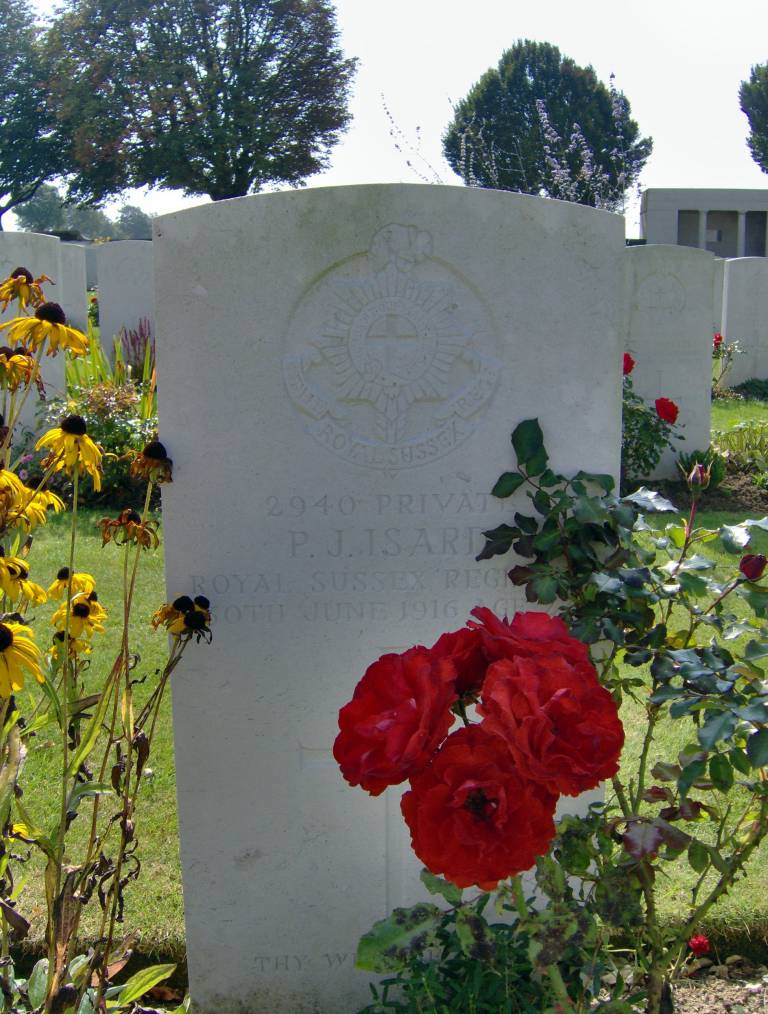
June 30th 1916 was a tragic day for Sussex and a particularly painful one for Newick.
By February 1916, plans were being finalised for a joint Anglo-French offensive on the Western Front, but the Germans struck first, attacking French positions at Verdun. Preparations for what would become the Battle of the Somme continued, albeit with a vastly reduced French input. As ‘zero hour’ on the ill-fated opening day of that battle approached, a number of diversionary attacks were launched. One of these was aimed at a salient in the German lines left after the Battle of Aubers Ridge back in May 1915 called ‘The Boar’s Head’, owing to its shape in aerial photographs. Three men from Newick connections were killed in the attack, and another died of his wounds the following day.
Four men from Newick
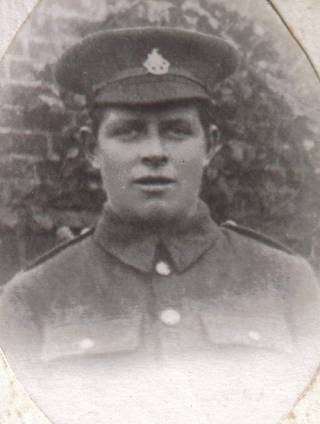
Sydney Brooks
The 1911 census shows Sydney was indeed still at school and also still living in Cherry Tree Cottages. Frances was not at home, but William was with their parents, but apparently unemployed. There was also a new younger sister, Lily.
Sydney joined up on the 11th November 1914 in Lewes. He was therefore underage, as he was still only 16 years old. SD1632 Private Sydney Brooks sailed for France on 4th March 1916. His brother William clearly joined up at the same time (he was also underage, as he was only 17), as his Regimental Number was SD1633. The prefix to these numbers stands for ‘South Downs’ and was given to men who joined the 11th, 12th or 13th Battalions of the Royal Sussex Regiment. Both of the Brooks brothers joined the 12th Battalion.
The three battalions are often referred to as the 1st, 2nd and 3rd South Downs Battalions, or more colloquially as ‘Lowther’s Lambs’ after Claude Lowther, Member of Parliament and owner of Herstmonceux Castle who had been instrumental in local recruitment early in the war. In essence the men who joined the battalions were part of Lowther’s private (although officially sanctioned) army, trained on land at Cooden, East Sussex, and were not placed under official War Office control until July 1915.
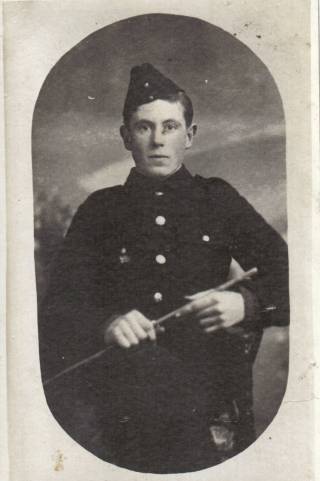
Charles Hodges
By 1911 the family had moved to Church Road. Molly and Alice were not at home but George Jnr., Katherine, Alfred, Charles and Lily were still living with their parents. Katherine was listed as a ‘Kitchen Maid’ and Lily was still at school. All three boys were listed as ‘Domestic Gardener’. Their father had retired by that time.
Charles clearly joined up at the same time as Sydney Brooks as his regimental number was SD1637. He also joined the 12th Battalion. Military records show that he sailed for France in March 1916, presumably at the same time as his schoolfriend Sydney.
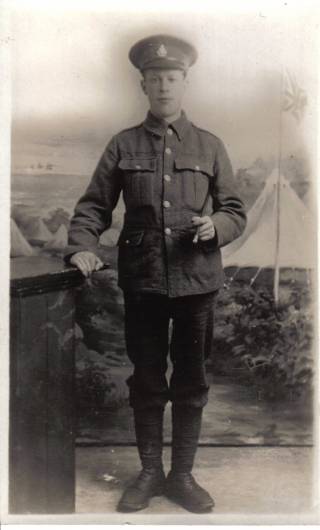
Percy Isard
By the time of the 1911 census, the family consisting of Stephen, Ellen, Percy and Joseph were still living at The Green. Stephen was working on one of the local farms, although both his sons were working as assistants in shops. Percy was working in a grocers and Joseph was serving in a drapers.
Percy joined up in November 1914 in Lewes. SD2940 Private Percy Isard was posted to the 13th Battalion, Royal Sussex Regiment. Records show he sailed for France in March 1916, probably at the same time as Charles Hodges and Sydney Brooks.
Clement Trill was born in Brighton in 1887, the fourth son of Henry Trill, a printer born in Brighton, and his wife Elizabeth, who was from Suffolk. The couple eventually had nine children (5 sons and 4 daughters, one of whom, Maud died in infancy). The family were clearly well-to-do as the 1881 Census shows that while living at an address in Clermont Road, near Preston Park in Brighton, the family had a servant, Elvey Eager. By 1891 they had moved to Duke Street in the town, and their domestic servant was one Sarah Noakes, The family were living in Newick by 1894 when Clement’s brother, Charles was born, but it is uncertain how long they stayed in the village and by the time of the 1901 census the family had moved to Cuckfield, but still had Sarah as their live-in servant. Clement does not appear to have attended the village school.
By 1911 Henry had died, but the Trills were still living in Duke Street. Frederick, Clement, Gertrude, Florence, Charles and Sarah were still living with their mother. Florence and Charles were at school despite the fact that they were 18 and 16 respectively. Gertrude and Clement were both working as stationers, and Frederick was working as a printer. Sarah Noakes was still living with the family as a ‘General Domestic Servant’.
Clement’s regimental number suggests he enlisted in ‘Lowther’s Lambs’ in November 1914. He joined the 13th Battalion, but clearly his mind was not entirely on soldiering and SD2803 Private Trill married Miss Violet Davis the following year. He sailed for France in March 1916 with rest of the battalion.
June 30th 1916
The War Diaries of the 12th and 13th show that both formations had been in and out of the front line since their arrival on the continent in March. By the 29th June 1916, both battalions were in the Ferme de Bois/Richebourg area awaiting the attack, following a period of practice for it behind the lines. The detailed orders for the plan of the attack show that the intention of the action was to capture both front and support lines in the area of the Boar’s Head. To this end the 12th and 13th Battalions were to capture these positions and hold them, forming a new front line, the 12th on the right, and the 13th on the left of the assault. The 11th Battalion, Royal Sussex Regiment was in reserve, making the attack a very local affair.
Following a short bombardment, the Sussex men attacked at 3.05am on the morning of 30th June 1916. The War Diary of the 12th Battalion is short and to-the-point:
‘Battalion attacked enemy front and support lines and succeeded in entering same. The support line was occupied for about ½ an hour, and the front line for 4 hours. The withdrawal was necessitated by the supply of bombs and ammunition giving out and the heavy enemy barrage on out front line and communication trenches preventing reinforcements being sent forward.’
By 10.00am the battalion had been relieved and was marching to billets at Les Lobes. A figure entered in the margin of the 12th Battalion’s War Diary shows that the casualty figure for the day was 412 men killed, wounded or missing. Privates Sydney Brooks and Charles Hodges were among them. Sydney’s brother William survived the attack.
The War Diary of the 13th Battalion gives a more detailed account of the events of the day, but in essence the 13th Battalion’s experience was clearly much like that of their comrades in the 12th Battalion. They managed to occupy limited parts of the German front and support line but were forced back owing to fears that they would be cut off. The only extra detail of significance is the effect of a smoke screen designed to mask the advance, which drifted into the attacking formation causing great confusion, especially in the darkness of early morning.
The battalion was relieved at 1.30pm and marched to billets in Vielle Chapelle. The War Diary does not give complete casualty figures, but Paul Reed, (a leading authority on the Royal Sussex Regiment during the Great War) gives a total figure of nearly 1,100 men killed wounded or missing from the three Battalions (a company from the 11th Battalion had gone forward as a carrying party and had been almost completely wiped out). Hence casualties in the 13th battalion were even higher than those in the 12th. Private Percy Isard was among the dead. He was 23 years old. Clement Trill was apparently wounded and taken to the Casualty Clearing Station at Merville, where he died the following day. He was 29 years old.
Remembering Lowther’s Lambs
Sydney Brooks (aged only 18 years) and Charles Hodges (aged 20 years) have no known graves and are commemorated on Panels 70 and 71 on the Loos Memorial (Sydney’s name lies two above that of another Newick lad, Charles Brown, killed in 1915). Percy Isard is buried in Cabaret-Rouge British Cemetery near the village of Souchez to the north of Arras. He was eventually laid to rest some distance from where he fell, as the cemetery houses the remains of men ‘brought in’ from over 100 separate cemeteries scattered over a wide area. Official records show that Percy’s remains were originally buried by the Germans in a cemetery near the village of Illies, but that his body was exhumed and identified by his identity disc in 1923, and reburied at Cabaret Rouge along with a number of other Royal Sussex men killed on 30th June 1916.
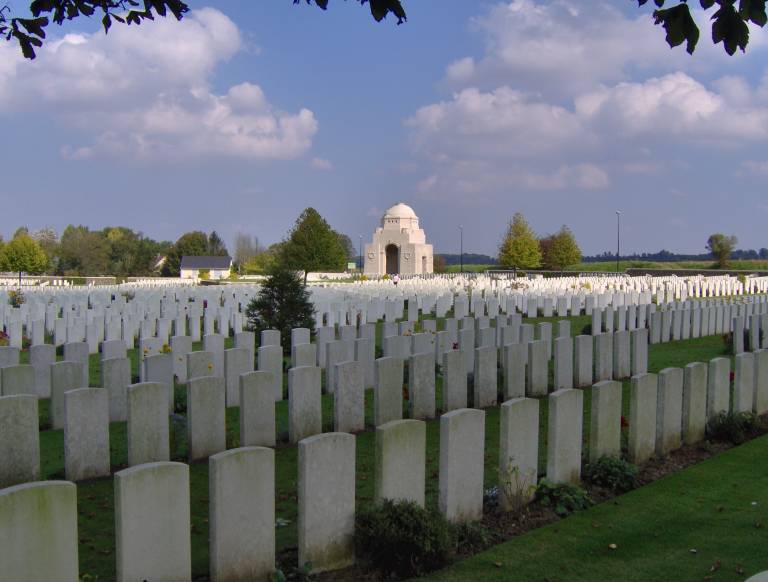
The cemetery at Cabaret-Rouge
The cemetery contains the remains of 7,655 Commonwealth servicemen from the Great War, of whom more than half are unidentified. The personal inscription on Percy’s grave reads ‘THY WILL BE DONE’, a popular choice, in this case made by his mother. There is a beautiful red rose planted close to his grave, and a number of Horse Chestnut trees grow nearby.
Clement Trill is buried in Merville Communal Cemetery, which houses the remains of 1,268 Commonwealth servicemen. The personal inscription on Private Clement Trill’s grave reads ‘IN EVER LOVING MEMORY FROM HIS WIFE AND LITTLE SON’; in a heart-rending postscript Violet gave birth to a baby boy who she named Clement shortly after her husband was killed. Violet never remarried and died in Hove in 1956.
The three Newick men killed on 30th June 1916 are commemorated on the school memorial, in the village Roll of Honour and Book of Remembrance and in St. George’s Chapel in Chichester Cathedral. Percy and Charles are also listed at the church, and Percy is also commemorated on his mother and father’s gravestone in the churchyard. Sydney’s name appears on the Fletching War Memorial. Although he was certainly not the only Newick ‘man’ to join up whilst underage, he appears to be the only one to be killed below the legal age that he was eligible for overseas service as a private (19 years old in 1916). He was only just 18 when he sailed for France.
Clement Trill is not commemorated on either of the two original village memorials, having left the village as a child, but he is remembered in Chichester Cathedral. His name and that of his younger brother Charles, are recorded on the Brighton War Memorial, Old Steine Gardens, Brighton.
All four of the men were awarded the Victory Medal and the British War Medal. The Commonwealth War Graves Commission entry for Charles Hodges describes him as the ‘Son of the late George Hodges’, and that for Percy Isard describes him as the ‘Son of Ellen M. Isard, of The Firs, Newick, Sussex’. Sydney’s entry gives no extra details of his all-too-short life. Clement’s entry shows his widow Violet was living at No. 40, Marlborough Place, Brighton.
All four families paid a high price during the Great War. Sydney Brooks’ brother William survived the 30th June attack, but was wounded in July 1918. Charles Hodges’ elder brother Alfred was killed shortly before the Armistice. Their older sibling George served in India during the war. Percy Isard’s brother Joseph joined the 9th Battalion of the Royal Sussex Regiment and was taken prisoner at Loos on 26th September 1915. Clement Trill’s younger brother Charles was killed on the Somme a week after Clement’s death.
All of the Newick men killed during the two world wars are commemorated at the village green in Newick.
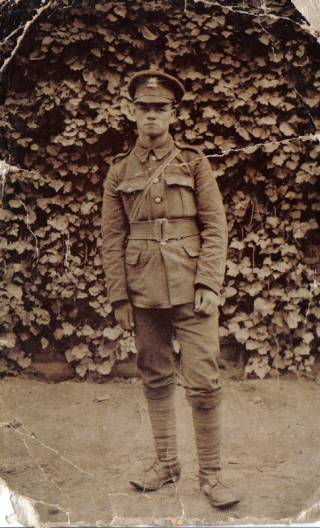
Simon's maternal grandfather, Charles Curl
The research on the lads from the village of Newick came about after seeing the village’s two original war memorials in the church and school and wondering how such a small village had given so much; there are 40 names on the memorials.
Starting with pictures and limited details in a ‘Roll of Honour’ kept by the village headmaster (who lost a son himself) the stories of the men were compiled from various documents held by the National Archives, the Commonwealth War Graves Commission, and a range of other sources including press cuttings. Research led to the discovery of 13 more men with connections to Newick who died as a result of their service.
 Close
Close

